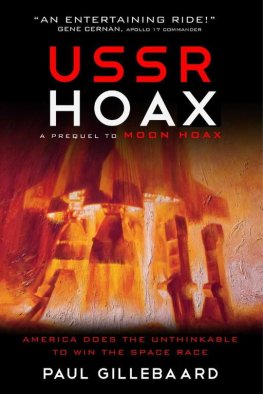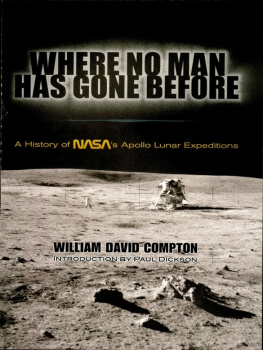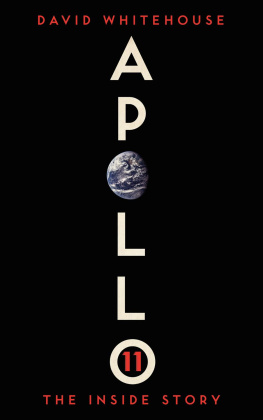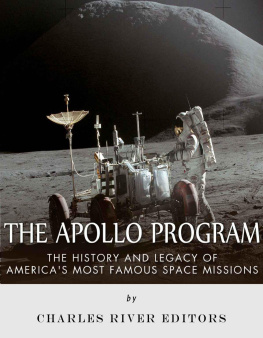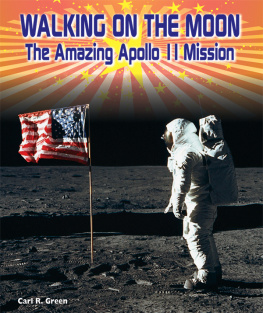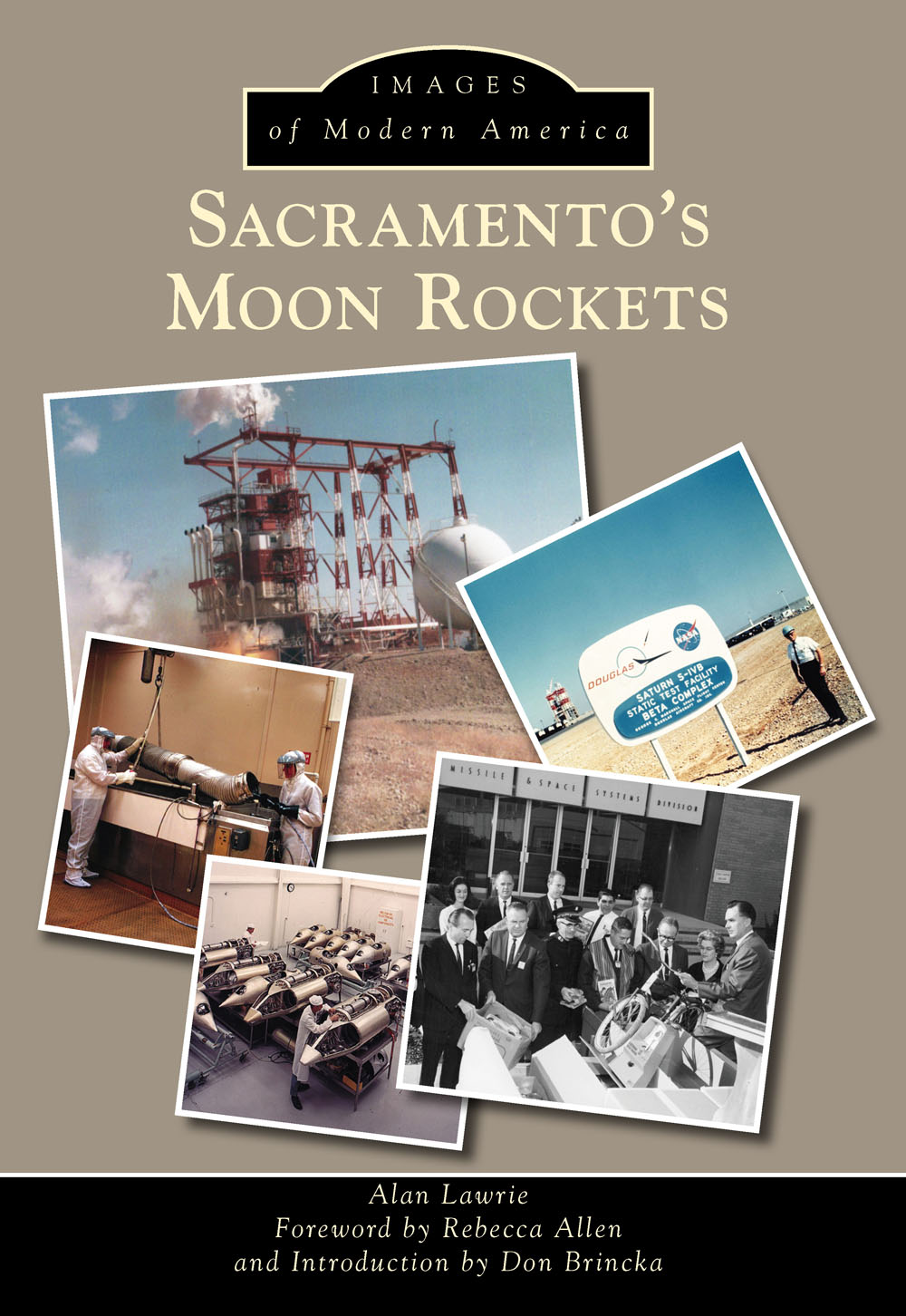
IMAGES
of Modern America
SACRAMENTOS
MOON ROCKETS

This photograph shows the test firing of the Saturn V third stage, which took the crew of Apollo 11 to the moon for the historic first landing in July 1969. The S-IVB-506N stage was test fired for 445.2 seconds at Douglas Aircraft Companys Sacramento testing facilitys (SACTO) Beta III test stand on July 17, 1968. (68-68410. Alan Lawrie/Arlene Royer/National Archives and Records Administration [NARA].)
ON THE FRONT COVER: Clockwise from top left:
The S-IV Battleship undergoes a test firing (Gene Robinson; ).
ON THE BACK COVER: Left to right:
The air-conditioned control room in the Beta control center (Dick Serrano; ).
IMAGES
of Modern America
SACRAMENTOS
MOON ROCKETS
Alan Lawrie
Foreword by Rebecca Allen
and Introduction by Don Brincka

Copyright 2015 by Alan Lawrie
ISBN 978-1-4671-3389-0
Ebook ISBN 9781439652602
Published by Arcadia Publishing
Charleston, South Carolina
Library of Congress Control Number: 2015943994
For all general information, please contact Arcadia Publishing:
Telephone 843-853-2070
Fax 843-853-0044
E-mail
For customer service and orders:
Toll-Free 1-888-313-2665
Visit us on the Internet at www.arcadiapublishing.com
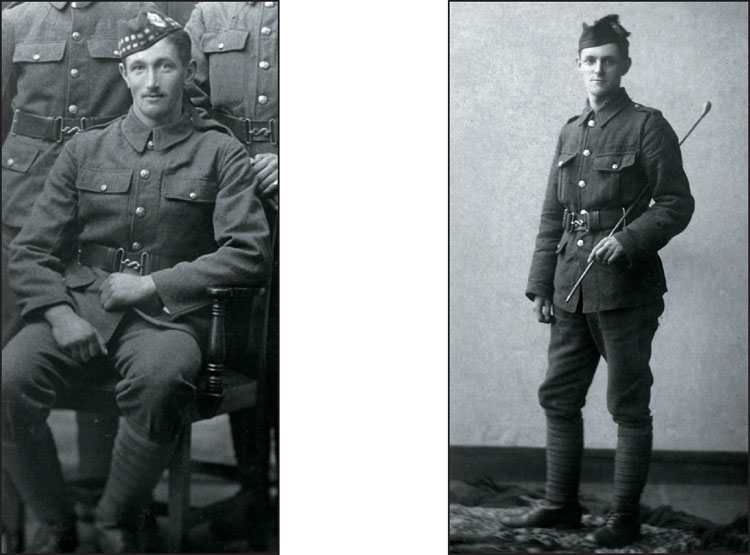
This book is dedicated to two of my great uncles who gave their lives in the Great War. Alexander Lawrie (left) was born June 24, 1891, at 21 Rossie Place, Edinburgh. He served in the 16th Battalion Royal Scots and was killed in the Battle of the Somme on July 1, 1916. John Lawrie (right) was born on February 4, 1896, at 21 Rossie Place, Edinburgh. He served in the 2nd/4th Battalion York and Lancaster Regiment and was killed near Rheims on July 27, 1918. (Both, Anne McLaren.)
CONTENTS
ACKNOWLEDGMENTS
These photographs of Douglas Aircraft Companys Sacramento test facility (SACTO) came from a number of sources. The caption to each photograph identifies the source, but I provide more background here. I collected around 900 SACTO photographs and have selected around 160 for this book, based on criteria of color, quality, and subject matter.
I gratefully acknowledge the support of the following people who contributed to this book. Don Brincka showed me around SACTO in 2006, provided his personal photographs and documents, answered numerous questions, and wrote the introduction. Rebecca Allen led the 2013 site survey of SACTO, invited me to participate, and wrote the foreword. Rebecca was supported by Katherine Anderson, Scott Baxter, and Lisa Westwood of Environmental Science Associates and Robert Hicks and Star AndersonHicks.
Terri Pennello (whose father, Julian, worked for NASA at SACTO from 1964 to 1970) provided frequent advice and coordination with the SACTO retirees. Terri also championed the preservation of over 400 photographs stored for 40 years in the garage of retiree Jim Porter and now in the Sacramento Center for History. Ralph Allen, NASA Marshall Space Flight Center (MSFC) retired, provided photographs from the MSFC archives. Arlene Royer, of the National Archives and Records Administration (NARA) in Atlanta, scanned and provided photographs from the original negatives held at NARA.
Mike Jetzer (of heroicrelics.org) supplied various diagrams and made the DVD video capture images of the SACTO explosions. In addition, Mike is now the host of the collection of Douglas photographspreviously located on Phil Broads Cloudster websitewhich originally came from the Santa Monica Museum of Flight.
Douglas retirees Val Sushkoff, David Dallman, Dick Serrano, Jerry Robison, and Gene Robinson and Rocketdyne retiree Vince Wheelock provided photographs from their personal collections. Steve Seabourne, president of Automotive Importing Manufacturing, Inc., and current owner of the Vehicle Checkout Laboratory (VCL) provided access to the VCL. Aerojet Rocketdyne, Elliot Homes, and Easton Development Company, LLC, provided access to the site in 2013. Jeff Ruetsche and Ginny Rasmussen kindly and successfully managed the book at Arcadia Publishing.
My thanks to everyone who worked for Douglas and NASA in the 1950s and 1960s, who made this extraordinary story happen. As always, my thanks to Olwyn Lawrie, for everything.
Alan Lawrie
Hitchin, England
February 2015
FOREWORD
In 2012, I began to document the 1,700-acre Douglas Missile Test Facility for the Historic American Engineering Record (HAER), a heritage program administered by the National Park Service intended to document historic sites and structures related to engineering and industry. This site, so important to aeronautical history, had largely been abandoned for more than three decades and was slated for demolition to make way for the development in Rancho Cordovaa growing suburb of Sacramento.
As an architectural historian and historical archaeologist, I had previously recorded military and engineering facilities that postdated World War II, but I wanted to know more about aerospace history. I needed to find an expert. Internet searches on the topic led me to Alan Lawrie. He published an article on the Douglas facility and knew so very much about the Saturn program and its engineering. I also enlisted the expertise of Robert Hicks, a photographer with the skills to meet the exacting standards of the HAER program.
Long rows of piled high cobbles and silt, interspersed with deep rows of excavated earth, provided a setting that was spacious enough to build a large-scale facility and simultaneously provide a buffer for captive firings and any explosions that wouldand didoccur. It was also a landscape situated near the urban population of Sacramento, which would provide the necessary work force.
Several complexes (Alpha, Beta, Gamma, Kappa, Sigma, Solid Propellant, and the administrative area) make up the Douglas Missile Test Facility, each serving a different function. The site was associated with the historical engineering development of the Nike Hercules surface-to-air missile, Thor intermediate-range ballistic missile, Nike Zeus (an anti-missile missile), Titan LR-91 second stage engine, Skybolt interceptor missile, and the NASA Saturn S-IVB booster, as well as the development and testing of liquid hydrogen, liquid oxygen, and bipropellant Auxiliary Propulsion Modules. These complexes contain specialized buildings and structures in a compatible landscape that reflects technological advances in form, function, and historic aesthetic. Each complex, and the activities associated with it, have left physical traces on the landscape. The individual complexes also relate to one another across time and space to create a whole. Overall, the facility captures the development and testing of the rocket booster engines associated with the nations military innovations and space exploration.
To adequately capture the depth, breadth, and context of this unique facility, we needed architectural, historical, engineering, and archaeological perspectives. The HAER record attempts to capture the study of an evolution of technology and the historical and physical traces that it left behind. The photographic and documentary HAER record (CA-HAER-2310) is now at the Library of Congress and can be found online at loc.gov.
Next page

